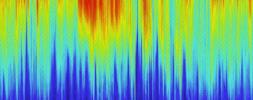The SNMREC Preferred Partner Program is an opportunity for our industry partners to collaborate more fully with the Center. This program is designed to dedicate SNMREC experts and resources to individual industry partner development needs.
Publication TR-10-125
Reference: Leland, A.E., F.R. Driscoll, J.H VanZwieten, N.J. Nagurny, and R.J. Howard, 2010: Ocean thermal energy capacity estimation and resource assessment of Southeast Florida. Proceedings, 2010 Offshore Technology Conference, May 3-6, 2012, Houston, Texas. OTC-20559-PP. DOI: 10.4043/20559-MS
Abstract: Florida Atlantic University, in collaboration with Lockheed Martin, has performed an ocean thermal resource assessment off Florida’s Southeast coast. Thermal properties in the Straits of Florida are characterized using a series of at-sea measurements and site specific single plant energy production estimates have been calculated using a parametric model of a 100 MW Ocean Thermal Energy Conversion system. The Straits of Florida off of Florida’s Southeast coast contain significant volumes of cold and warm water that are advected northward by the Florida Current. This resource is located within 8 km of shore in water as shallow as 250 m with a larger, more consistent resource further from shore. Direct measurements of the temperature profile and other water properties were taken from nearshore Southeast Florida to the Exclusive Economic Zone boundary along four evenly spaced transects perpendicular to Florida’s Southeast coast, spanning 160 km. Data are used to characterize the local bathymmetry, water properties, thermal structure, the seasonal variations of the ocean thermal resource, and identify sites with potential for ocean thermal energy deveopment. Along the southern transects in summer, the nearshore temperature difference, ΔT , between the cold bottom and warm surface water resources meets or exceed the threshold 20°C ΔT required for OTEC. In winter, the nearshore average ΔT of 17.76°C can produce 59-75% design net power for a single 100 MW plant and 70-86% in spring with ΔT averaging 18.25°C. Offshore along the southern transects, a high steady ΔT from 18.5-24°C creates an annual average net power production potential of 120-125MW, exceeding the proposed design production. Along the northern transects, the nearshore resource does not exist, but a consistent OTEC resource is present offshore, providing 70- 80% design net power in winter and 100-158% in spring and summer.



